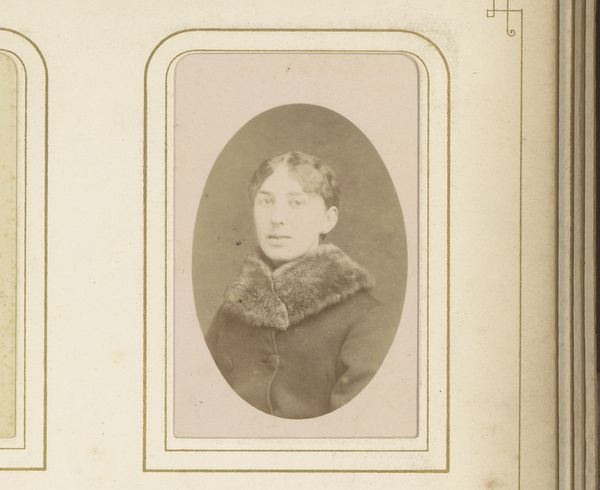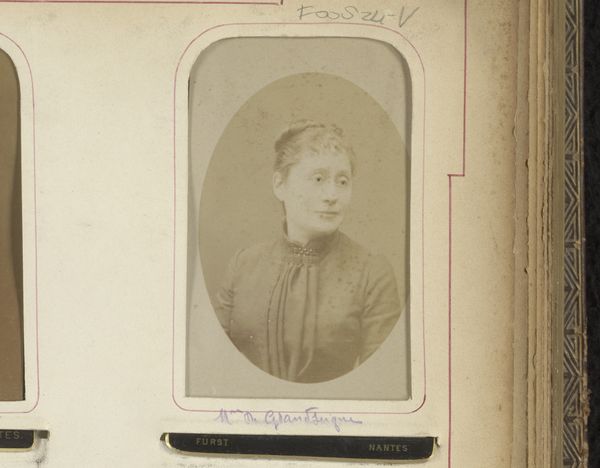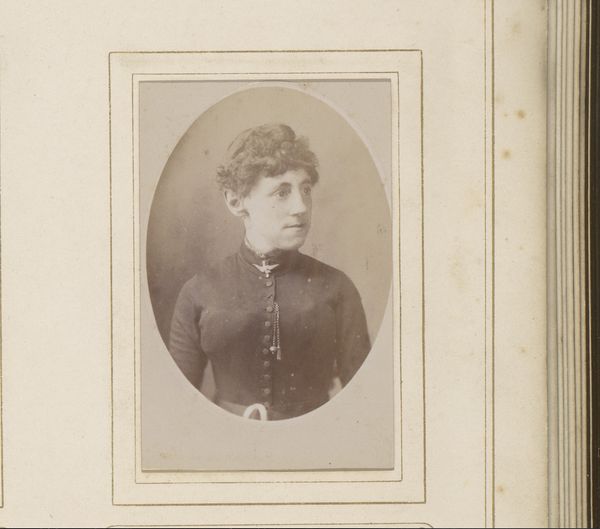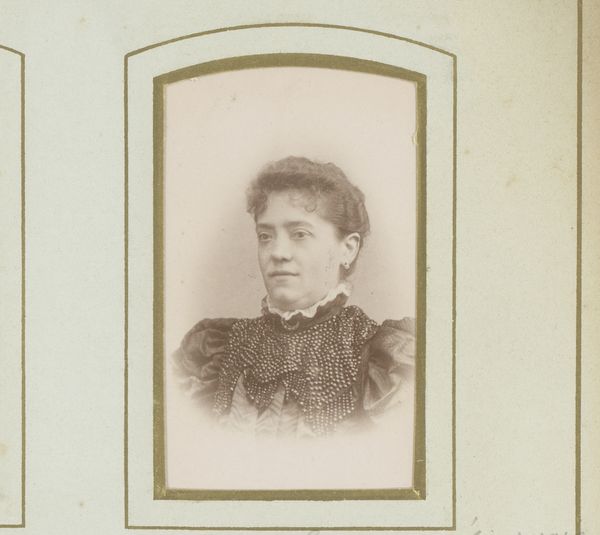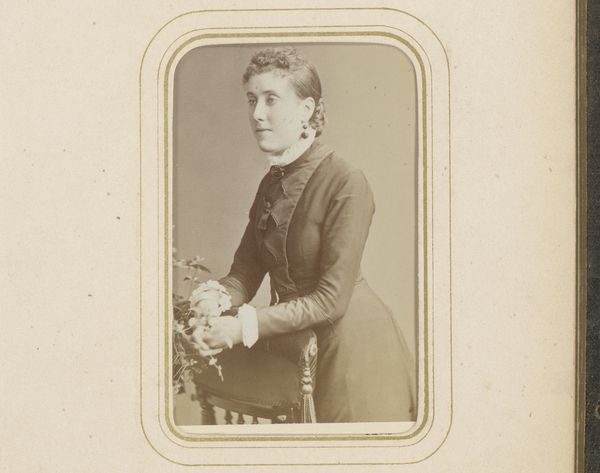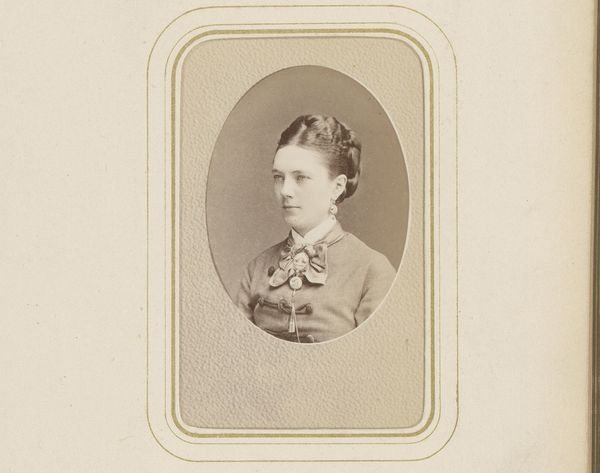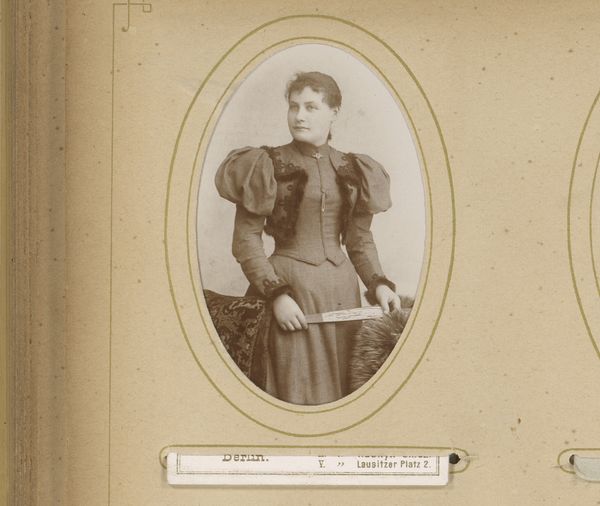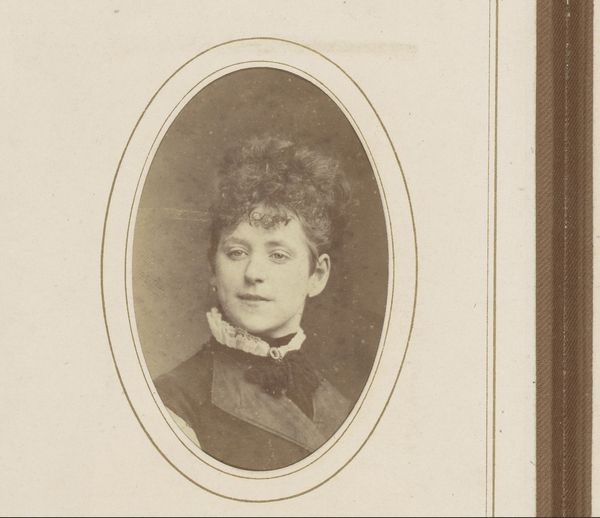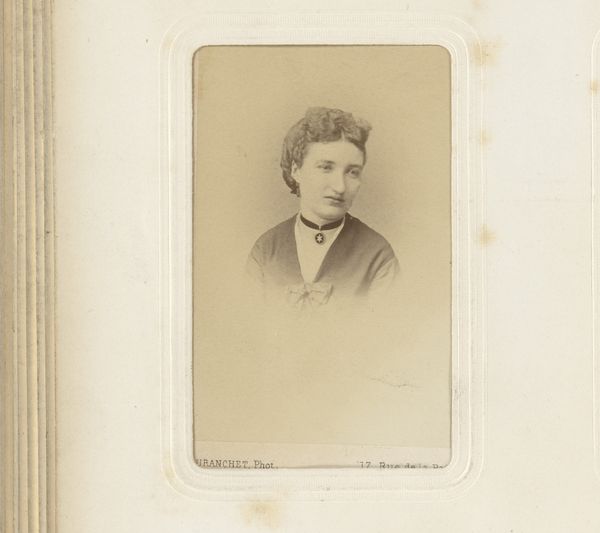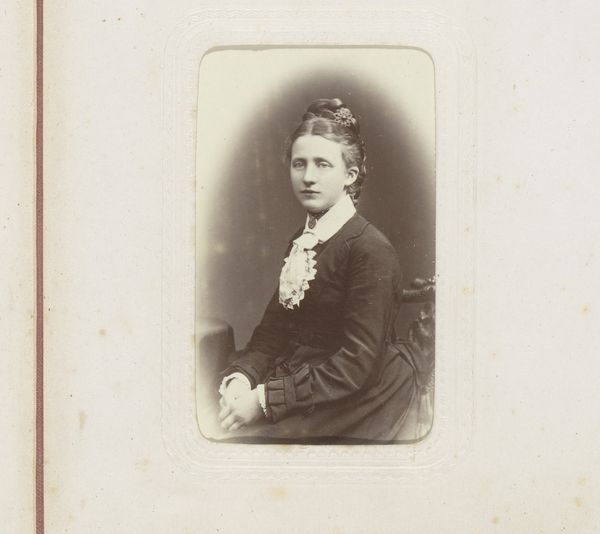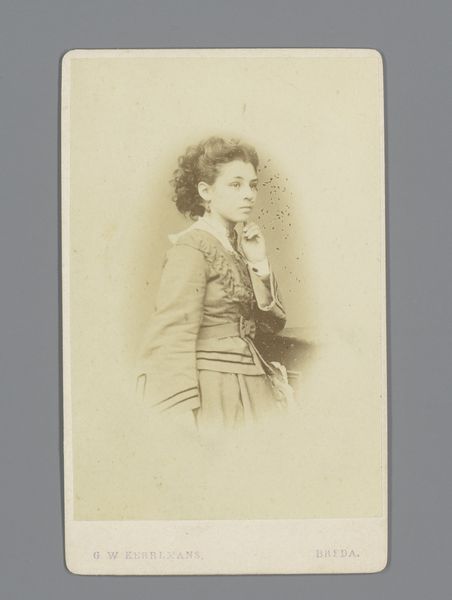
photography
#
portrait
#
photography
#
genre-painting
Dimensions: height 90 mm, width 55 mm
Copyright: Rijks Museum: Open Domain
Editor: This is Ferdinand Mulnier’s “Portret van een Vrouw,” taken sometime between 1857 and 1879. It’s a photographic portrait in the Rijksmuseum’s collection, and I find the sepia tones give it such a sense of history. How would you approach an interpretation of this piece? Curator: Let's think about the material reality of this object. This isn't just an image; it’s a product of specific industrial processes and a particular social moment. How would someone obtain this object, and what social value did photography serve then? Editor: I suppose it was less common to have personal photos taken, more of a luxury. It feels staged. Curator: Precisely. The means of production—the photographer’s studio, the sitter’s clothing—tell us about social class, about burgeoning consumerism. Think about the albumen print itself; how did this process make image production more widely accessible, yet also standardize portraiture? Editor: So, even something like the paper it's printed on matters? Curator: Absolutely. What kind of paper, how it was processed, who had access to it, how the industrial revolution has shaped production and what kind of subject is portrayed. Those are all clues about how images became commodities and how we are consumers in art and beyond. How might the sitter’s pose or attire relate to the growing fashion industry of the time? Editor: That’s a perspective I never really considered before, looking at art through the lens of industry and the materials. Curator: And consider how the portrait miniaturists felt! The disruption in their labour forced new aesthetic strategies as photography developed. Hopefully it will shift the way you view not just photos, but paintings and sculptures from this time forward.
Comments
No comments
Be the first to comment and join the conversation on the ultimate creative platform.

